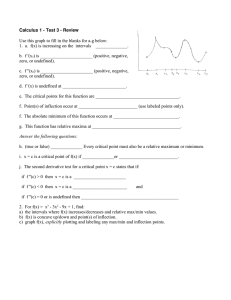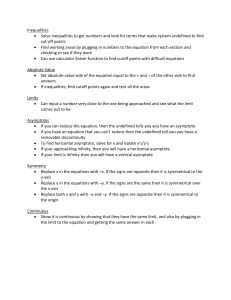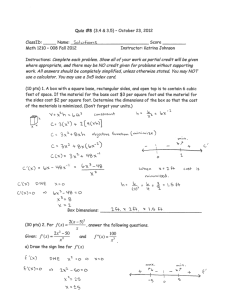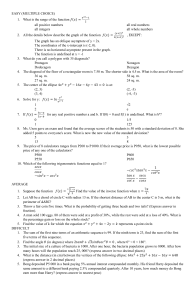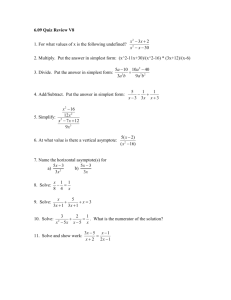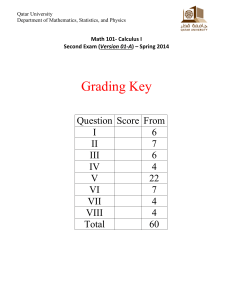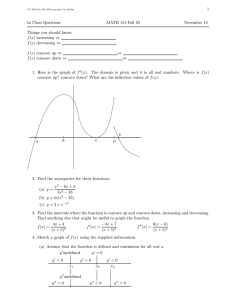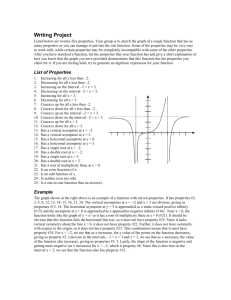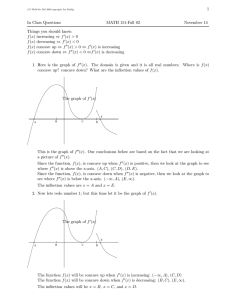CHAPTER FOUR MEMORY ITEMS
advertisement
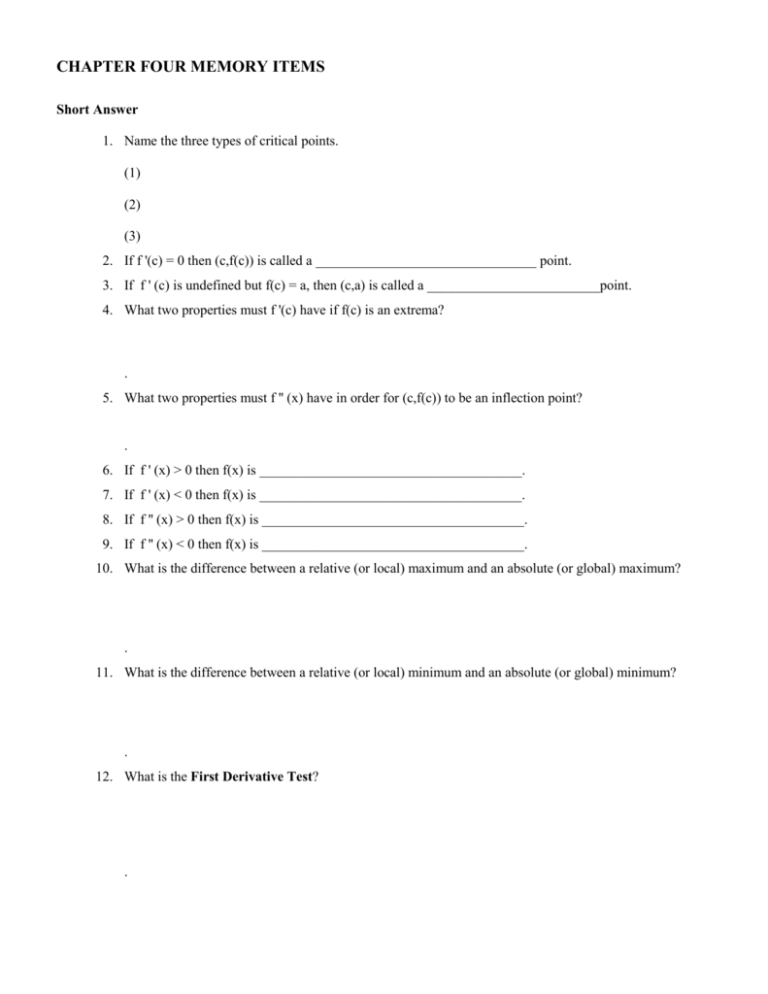
CHAPTER FOUR MEMORY ITEMS Short Answer 1. Name the three types of critical points. (1) (2) (3) 2. If f '(c) = 0 then (c,f(c)) is called a ________________________________ point. 3. If f ' (c) is undefined but f(c) = a, then (c,a) is called a _________________________point. 4. What two properties must f '(c) have if f(c) is an extrema? . 5. What two properties must f '' (x) have in order for (c,f(c)) to be an inflection point? . 6. If f ' (x) > 0 then f(x) is ______________________________________. 7. If f ' (x) < 0 then f(x) is ______________________________________. 8. If f '' (x) > 0 then f(x) is ______________________________________. 9. If f '' (x) < 0 then f(x) is ______________________________________. 10. What is the difference between a relative (or local) maximum and an absolute (or global) maximum? . 11. What is the difference between a relative (or local) minimum and an absolute (or global) minimum? . 12. What is the First Derivative Test? . 13. What is the Second Derivative Test ? . 14. What occurs on the graph of f(x) at x=c if both f ' (c) and f '' (c) equal zero? . 15. Besides points where f ' (c) = 0 where else may extrema occur? . 16. profit = __________________________________________ 17. What is the difference between p(x) and P(x) ? . 18. cost = C(x) = _____________________________+ _________________________* _____ 19. In cost/profit problems, what does x stand for? . 20. revenue = R(x) = x * _______________________________________ 21. When do we suspect a vertical asymptote? . 22. How do we verify that there is a vertical asymptote at x=a ? . 23. How do we verify that there is a horizontal asymptote at y=b ? . 24. What's the quickest way of evaluating limits when x infinity ? . 25. What are the two requirement for f(x) in order for the Mean Value Theorem to apply ? . 26. What is the conclusion of the Mean Value Theorem to apply ? . 27. How do we compute the average rate of change in f(x) (Also known as the average value of the rate of change) ? . 28. If f ' (x) = g ' (x) for all x, what is the relationship between f(x) and g(x) ? . CHAPTER FOUR MEMORY ITEMS Answer Section SHORT ANSWER 1. 2. 3. 4. 5. 6. 7. 8. 9. 10. 11. 12. 13. 14. 15. 16. 17. 18. 19. 20. 21. 22. 23. 24. 25. 26. 27. 28. endpts, stationary pts, singular pts stationary singular zero or undefined AND sign change or endpoint zero (or undefined) and change signs at x=c increasing decreasing concave up concave down relative (local) is only higher than neighboring points wheras absolute (global) is the highest of all points relative (local) is only lower than neighboring points wheras absolute (global) is the lowest of all points If f ' changes from + to - at x=c then f(c) is a max If f ' changes from - to + at x=c then f(c) is a min Given f ' (c) = 0 if f '' (c) > 0 then f(c) is a MIN, if f '' (c) < 0 then f(c) is a MAX, if f '' (c) = 0 then the test fails to determine anything Could be either a min, max, or an inflection point. at endpoints OR wenever f ' (c) is undefined but f(c) is defined revenue - cost p(x) is the price, P(x) is the profit fixed cost + price per item * x the number of items bought or sold price of one item Where denominator = zero Show that there is an infinite limit as x a Show that there is a numerical limit of b as x infinity Compare leading terms. f is continuous on [a,b] and differentiable on (a,b) f ' (c) = (f(b) - f(a)) / (b-a) for at least one c value between a and b. f(b) - f(a) ----------b-a f(x) = g(x) + c or f(x) - g(x) = c
